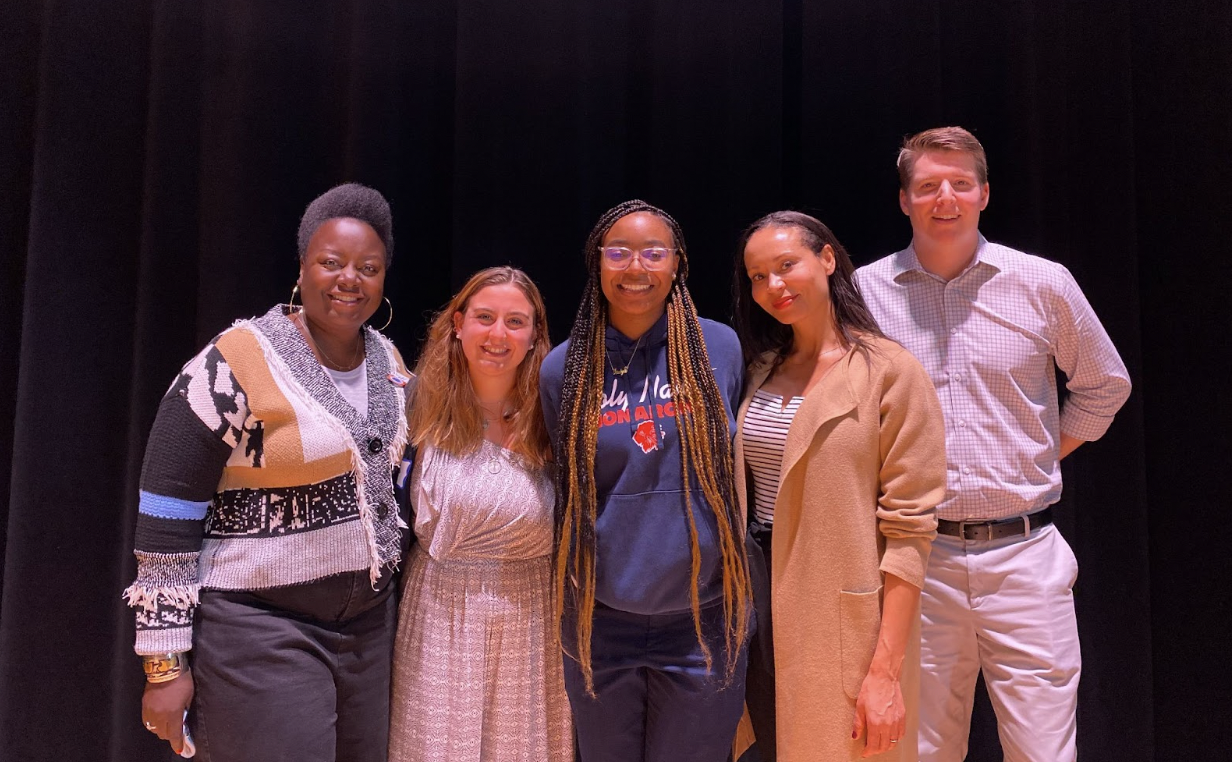“Your students are more powerful than you might ever imagine.”- Dr. Holly Joshi, 2022
Beginning year two of teaching, I grappled with how to prepare the learners entrusted to my care for the world outside the school walls. Holy Names High School is composed of young girls from all across the Bay, with diverse demographics that reflect the city of Oakland. For me, serving these students meant preparing them for the injustices that plague the community at large. One of the most glaring of these injustices is human trafficking, a threat clearly visible in the neighborhoods that surround the school. Yet, despite its visibility, proactive conversations that equip students with the skills, knowledge, and resources were not implemented school-wide. So I partnered with administrators and community leaders to create and implement a human trafficking curriculum to be administered during Advisory, a class that all students have each week.
On day one, students flipped through a Jamboard that featured murals from Artwork for Freedom, a non-profit dedicated to making trafficking visible through art. As students witnessed the powerful artworks, many of which were created by women who had been exploited, they responded to reflection questions. This lesson concluded with a space to share questions that arose from encountering this art, many of which related to the definition and logistics of human trafficking.
During day two, we answered these questions. The class watched clips of "Still I Rise," an Oakland-based documentary starring Dr. Holly Joshi, a former Oakland police officer and current advocate. This documentary showed neighborhoods that we were all familiar with and unveiled the experiences of people in Oakland. As students watched the documentary, they journaled responses to two questions based on the title: who is rising in this film, and what are they rising from? Students closed by discussing their reflections as a whole group and generating open-ended questions.
As we transitioned into day three, students met with Dr. Joshi, who gave a moving fireside-chat style assembly. Students from each advisory class took the stage, asking questions generated by their groups and engaging in a dialogue in front of their peers. In this conversation, Dr. Joshi shared her personal experience with countless survivors, offered moving considerations on how to approach systemic issues, and modeled professional advocacy. Back in their advisory classes, students wrestled with the information they received, using post-it notes to jot down their reactions.
Finally, on day four, students collaborated with their advisory teacher to commit to actions that they could take as a whole community and committed to sending information about resources to their friends and family outside of Holy Names. Some of these activities included sending resources to five people, posting a social media story with information, writing thank you notes to community organizers, and participating in a Walk for Freedom. This was made to extend our encounter beyond the walls of the school and share inspiration with those who matter most to us.
Many days after, I look back with awe, gratitude, and hope at the work of students, teachers, administrators, and community leaders against injustice. I started this journey by asking myself how we can prepare tomorrow’s leaders for today’s challenges. At the conclusion of this project, I admire what is already taking place. From the curiosity of students across the school to the brave volunteers who engaged in vulnerable conversations on stage, I am awed by the powerful students in Oakland. From the dedication of advisory teachers to the wisdom of a former Oakland police officer, I am grateful for the mentorship of leaders in our community. I am left with the hope that students learned something about today's challenges. I hope that they have a model for how to encounter, speak about, and combat injustice. I also hope that students can do what they witnessed and practice resistance themselves. Even more paramount, I hope for this to serve as a guide on how to prepare the learners entrusted in our care for the world outside.
 Alliance for Catholic Education
Alliance for Catholic Education
